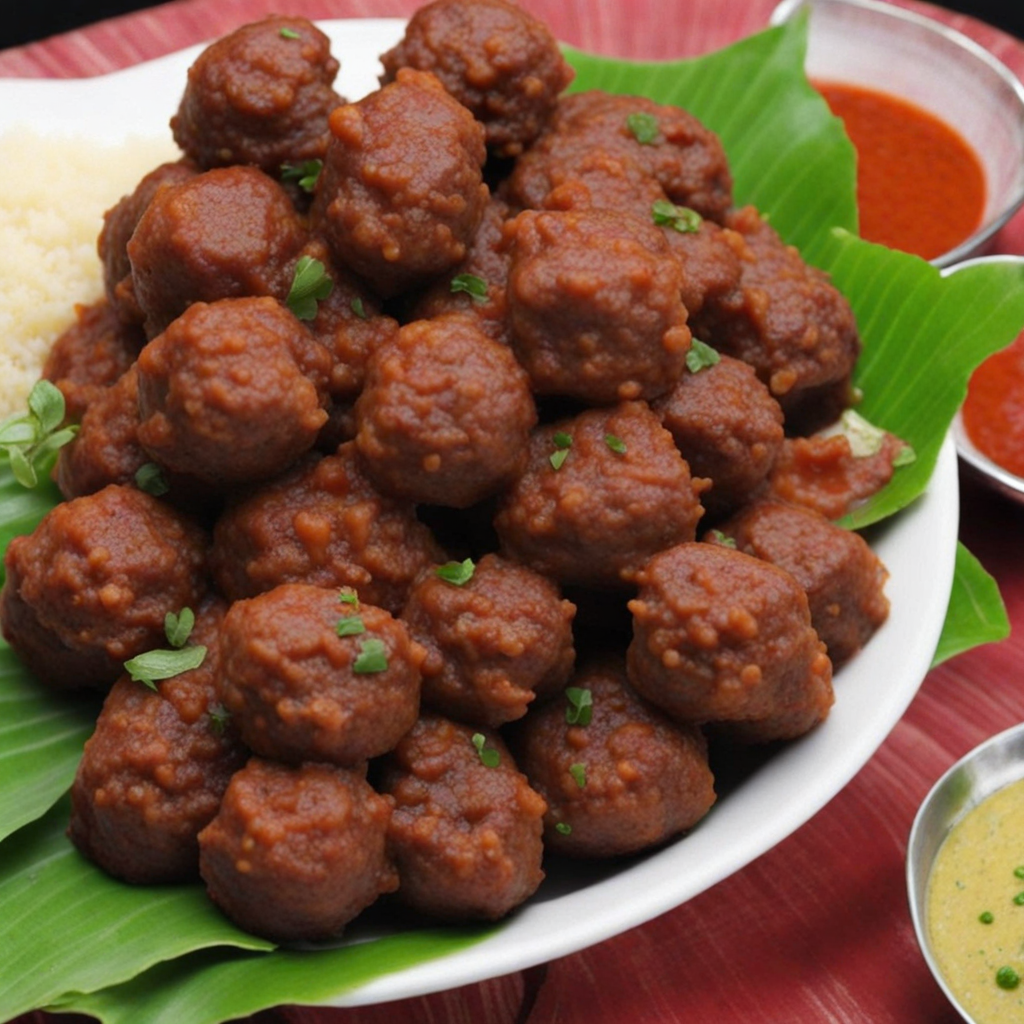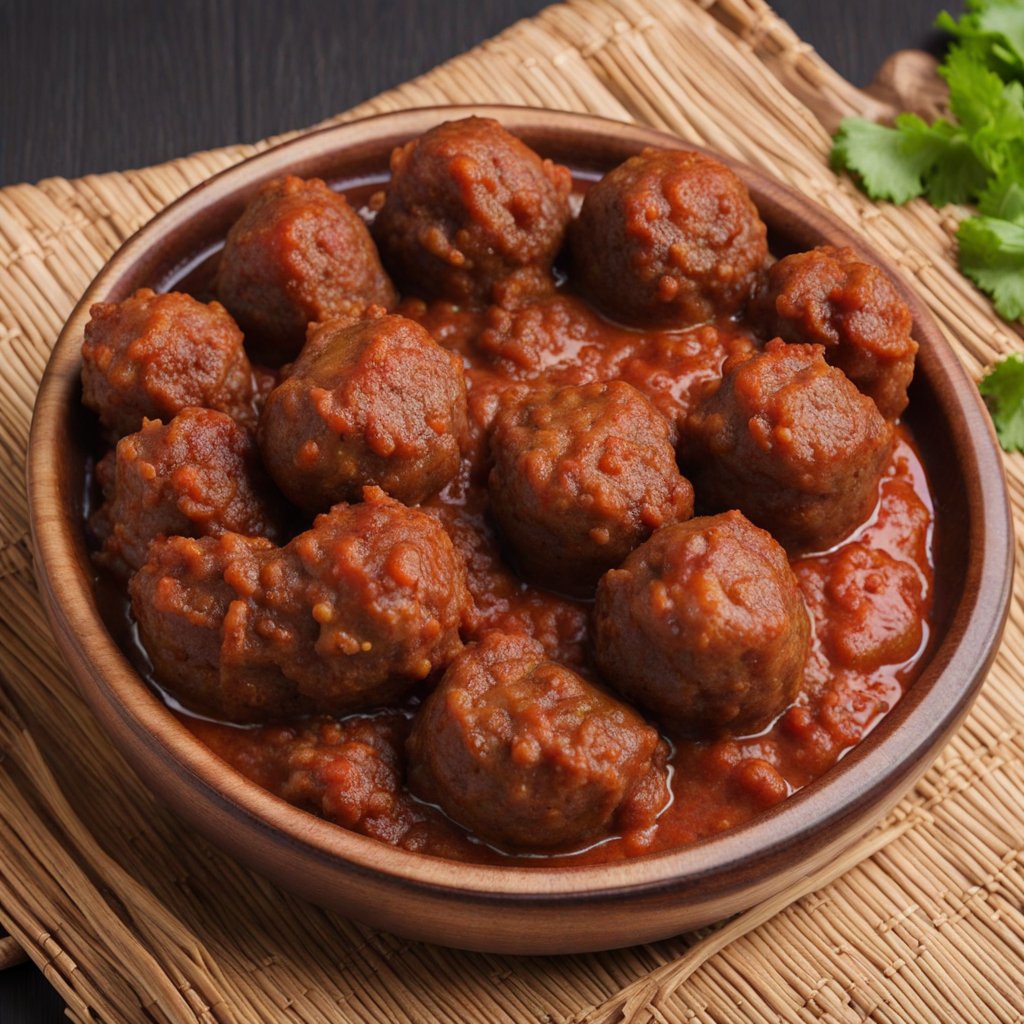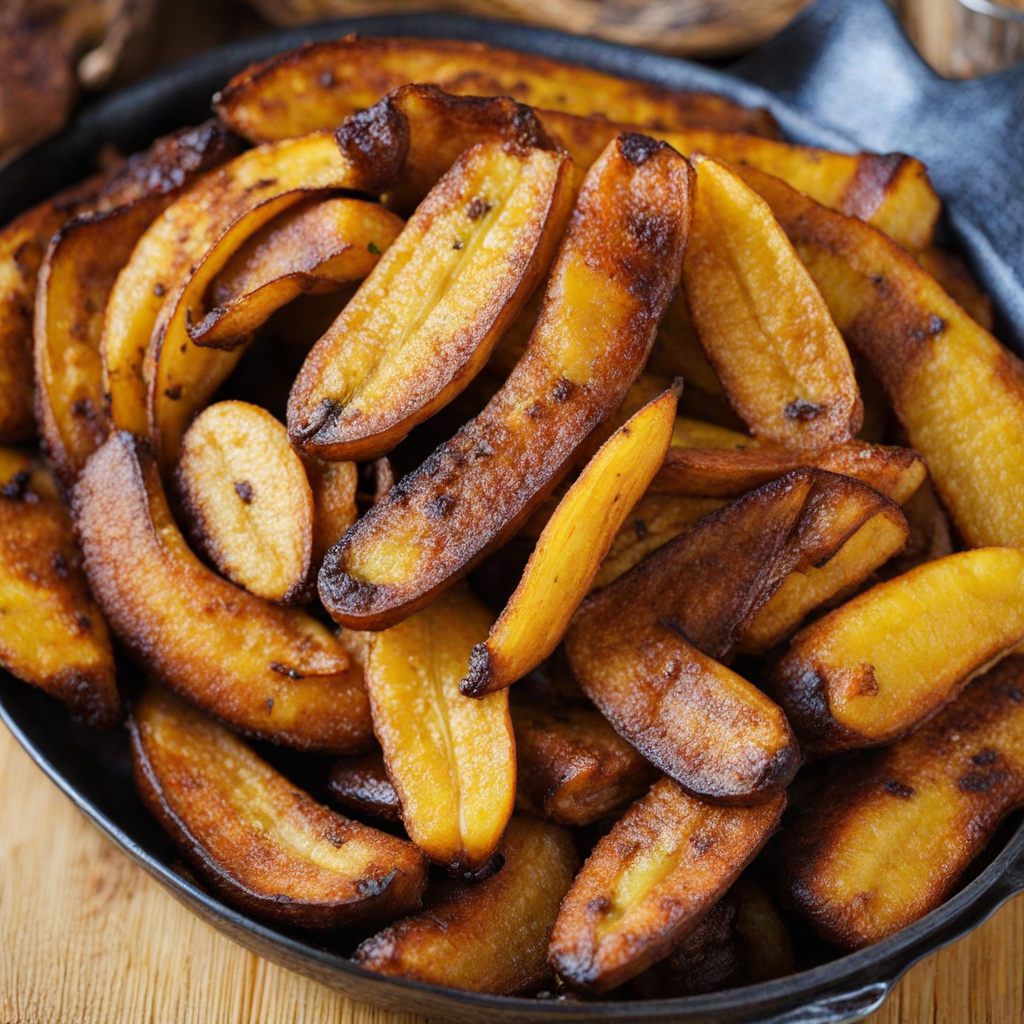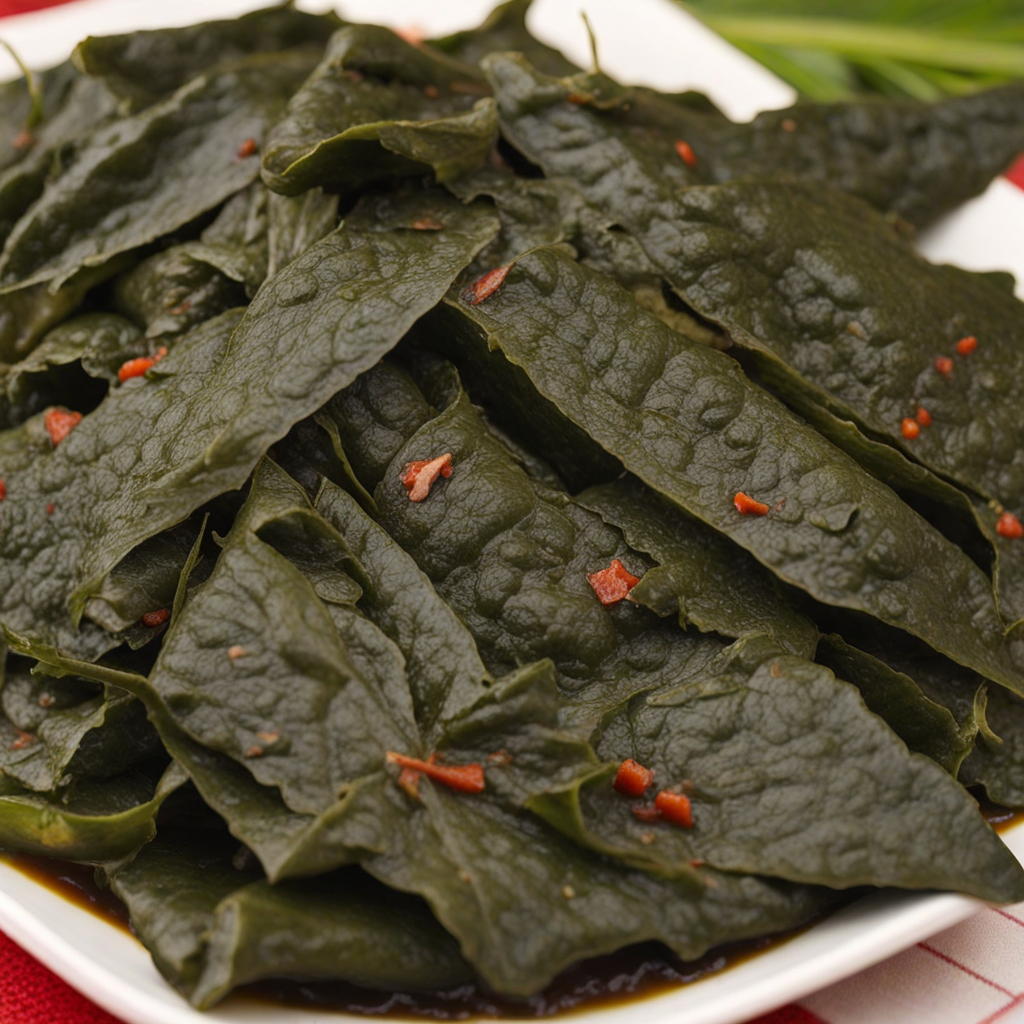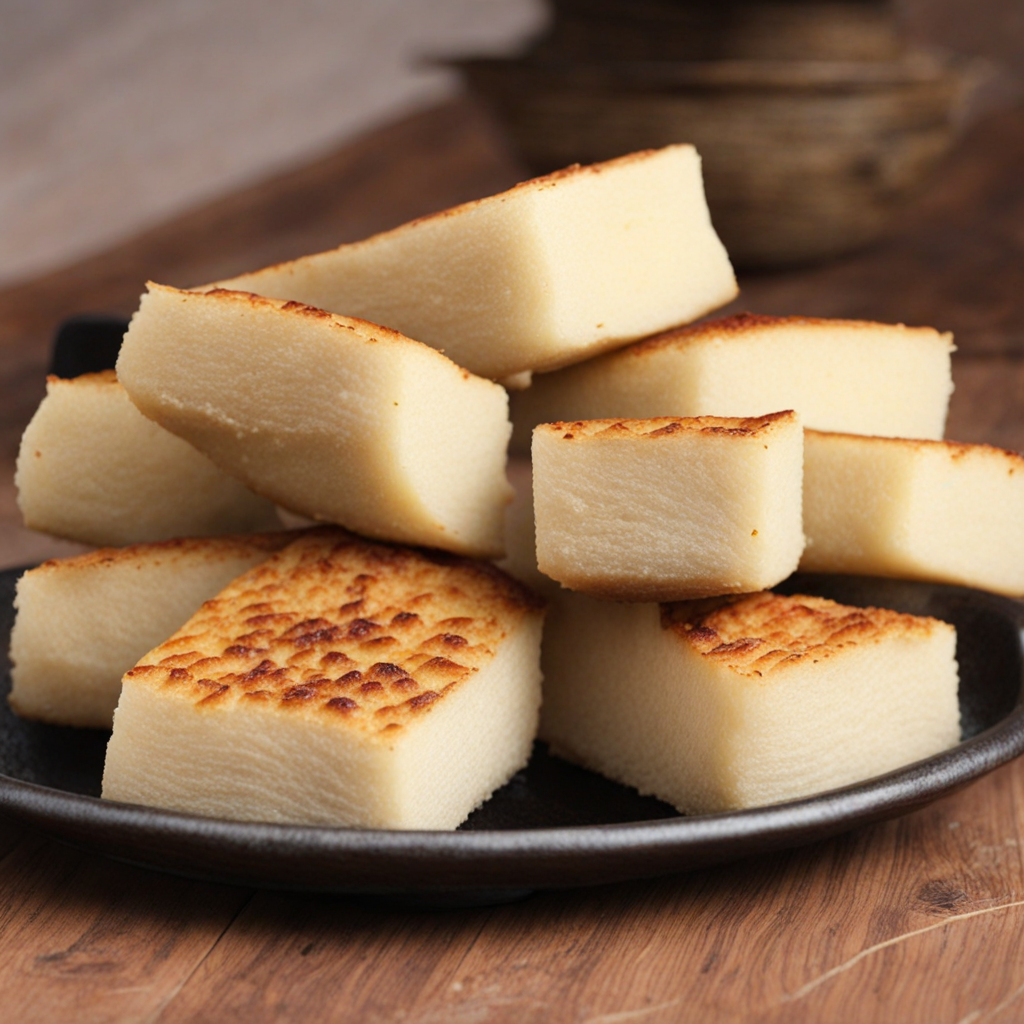Kanda Ti Nyma
Kanda Ti Nyma is a traditional dish from the Central African Republic that embodies the rich culinary heritage of the region. At its core, this dish features a delightful combination of meat, often beef or goat, marinated in a blend of local spices that infuse it with deep, savory flavors. The meat is typically slow-cooked to perfection, allowing it to become tender and succulent while absorbing the aromatic essence of the spices, which may include ingredients like garlic, ginger, and local chili peppers. This process not only enhances the flavor but also brings out the natural juices, creating a mouthwatering experience with every bite. Accompanying the meat is a vibrant sauce made from ingredients such as tomatoes, onions, and sometimes peanut paste, which adds a rich, creamy texture and a nutty undertone to the dish. The sauce is often simmered until thickened, melding the flavors beautifully and providing a perfect complement to the meat. Kanda Ti Nyma is typically served with a side of staple foods such as rice or cassava, creating a well-rounded meal that satisfies both hunger and the desire for bold flavors. This dish not only showcases the unique ingredients found in the Central African Republic but also represents the warmth and hospitality of its people. Sharing Kanda Ti Nyma is often an occasion for family and friends to gather, making it a dish steeped in cultural significance. For those looking to explore new tastes, Kanda Ti Nyma offers a delicious journey into the heart of Central African cuisine, promising a delightful blend of spices and textures that will leave a lasting impression.
How It Became This Dish
Kanda Ti Nyma: A Culinary Journey Through the Central African Republic #### Origins Kanda Ti Nyma, a beloved dish of the Central African Republic (CAR), is steeped in the rich tapestry of the region's cultural and culinary history. The dish, which translates to "meat stew" in the Sango language, is a staple that reflects the agricultural traditions and communal lifestyle of the Central African peoples. Its origins can be traced back to the indigenous communities that have inhabited this region for centuries, relying on the abundant natural resources of the land for sustenance. The Central African Republic is characterized by its diverse ecosystems, from the savannahs to the dense rainforests, which provide a wide variety of ingredients. Traditionally, Kanda Ti Nyma is made using a selection of meats—often beef, goat, or chicken—along with an array of vegetables, spices, and seasonings that vary by region and personal preference. The primary flavoring agents include tomatoes, onions, and a mix of local herbs and spices, often enhanced by the use of palm oil or groundnut oil. #### Cultural Significance Kanda Ti Nyma is more than just a dish; it embodies the essence of Central African hospitality and communal living. In many cultures across Africa, food serves as a medium for social cohesion, and Kanda Ti Nyma is no exception. It is typically prepared for gatherings, celebrations, and special occasions, representing unity and the sharing of resources. The communal aspect is vital; meals are often served in large bowls, encouraging diners to share and partake in a collective experience. In the CAR, where traditional values and customs are deeply ingrained, Kanda Ti Nyma often accompanies rites of passage, family reunions, and ceremonies. It is a dish that signifies both abundance and togetherness. The preparation of Kanda Ti Nyma can also be a communal activity, with family members and friends coming together to cook, talk, and bond over the stove, making it a truly social affair. #### Development Over Time Over the years, Kanda Ti Nyma has evolved, influenced by various factors, including trade, colonization, and globalization. The introduction of new ingredients through trade routes has diversified the flavor profile of the dish. For example, the arrival of spices and cooking techniques from neighboring regions and European colonizers brought alterations to the traditional recipes. While the core ingredients remain, variations of Kanda Ti Nyma have emerged, adapting to the tastes and preferences of different communities. The colonial period significantly impacted the food culture of the Central African Republic. European powers, particularly the French, influenced agricultural practices and introduced new crops that would eventually find their way into local cuisine. As a result, ingredients such as potatoes and carrots became more widely used in Kanda Ti Nyma, showcasing an evolution in flavors and presentation. This blend of local and foreign influences reflects the resilience and adaptability of the Central African people, who have maintained their culinary identity while embracing new elements. The modern era has seen Kanda Ti Nyma gaining recognition beyond the borders of the Central African Republic. As diaspora communities have settled in various countries, they have brought their culinary traditions with them, sharing dishes like Kanda Ti Nyma with new audiences. This globalization of food has led to a resurgence of interest in African cuisine, with Kanda Ti Nyma being celebrated in food festivals and culinary events, showcasing its rich flavors and cultural significance. #### Cooking Kanda Ti Nyma The preparation of Kanda Ti Nyma is an art form in itself. It typically begins with marinating the meat in spices and allowing it to absorb flavors before cooking. The meat is then sautéed with onions and garlic until browned, after which tomatoes and other vegetables are added, creating a rich, savory stew. The dish is often simmered for several hours, allowing the flavors to meld beautifully. Traditionally, Kanda Ti Nyma is served with a side of fufu, a starchy accompaniment made from cassava, yam, or plantain. The combination of the hearty stew and the delicate fufu creates a satisfying and balanced meal. The dish can also be accompanied by rice, another staple in Central African cuisine. #### Kanda Ti Nyma in Contemporary Context In contemporary society, Kanda Ti Nyma continues to hold a special place in the hearts of many Central Africans. It serves as a reminder of home for those in the diaspora and a symbol of resilience for communities facing adversity. In times of conflict, such as the civil unrest that has periodically affected the CAR, food becomes a source of comfort, hope, and solidarity among people. Culinary tourism has also begun to flourish in the Central African Republic, with Kanda Ti Nyma being at the forefront of this movement. Travelers seeking authentic experiences are increasingly drawn to local cuisines, and dishes like Kanda Ti Nyma allow them to connect with the culture and traditions of the region. Restaurants and food stalls now feature the dish prominently, often accompanied by stories of its origins and significance. Moreover, the rise of social media has created a platform for chefs and home cooks alike to share their recipes and experiences related to Kanda Ti Nyma. This has led to a revival of traditional cooking methods and a renewed appreciation for Central African cuisine globally. #### Conclusion Kanda Ti Nyma stands as a testament to the rich history and cultural heritage of the Central African Republic. With its roots deeply embedded in tradition, communal values, and the land’s natural bounty, it remains a pivotal dish in the culinary landscape of the region. As it continues to evolve and adapt to modern influences, Kanda Ti Nyma not only nourishes the body but also serves as a bridge connecting generations, communities, and cultures. Through each bite, one can taste the history, resilience, and spirit of the Central African people, making Kanda Ti Nyma a dish of not just sustenance, but of profound significance.
You may like
Discover local flavors from Central African Republic


